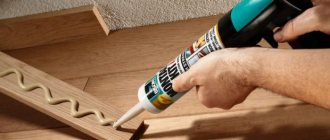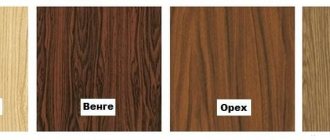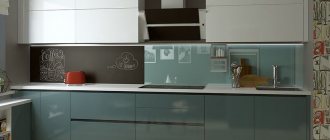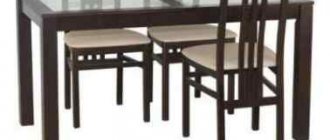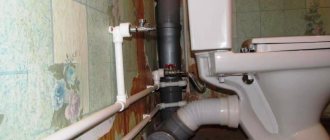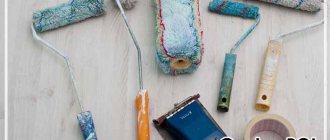Types of adhesive joints
To glue tiles to liquid nails, you need to know the types of glue.
There are two types of composition:
- An acrylic one was developed based on a water emulsion. When making fastenings with this connection, it is important to follow safety precautions. Non-toxicity is the main advantage. This characteristic allows it to be used in unventilated areas;
- Organic dyes are components of the neoprene mixture. The strength of the material becomes a plus. Toxicity is the main drawback, but when using protective equipment you can even work with smooth materials, plastic, glass. The room must be ventilated after completion of repairs.
By purpose they are distinguished:
- base solution (standard);
- reinforced (for heavy products);
- universal (interior and exterior decoration);
- waterproof (for rooms with high humidity);
- white (for transparent, translucent mosaic);
- special solution (resistant to frosty weather, high temperatures).
Types of liquid nails
There are two main classes:
- water based;
- based on organic solvent.
Liquid nails, based on water, are inexpensive and suitable for porous surfaces and dry rooms.
| Liquid nails for ceramic tiles in the bathroom are used only in those places that are not constantly in water, but even in this case, you need to grout the seams with a good grout | Varieties of glue that contain an organic solvent are more versatile and, accordingly, have a higher price. Thanks to their more aggressive base, these liquid nails can withstand more weight and are suitable for use in rooms with high humidity. These are the liquid nails for ceramic tiles and metal that are most often used. |
However, organic solvents have their own side properties: they emit aggressive vapors that cause dizziness and nausea, and in high concentrations can lead to loss of consciousness. So working with this type of liquid nails requires compliance with some safety rules, namely: regular ventilation of the premises or the use of respirators and masks with filters, as well as protective gloves.
Upon final hardening (from 12 hours to 24 hours), the glue ceases to be hazardous to health.
Advantages and disadvantages
The use of such nails for tiles is becoming relevant in repair work for many reasons. The main advantages include:
- Moisture resistant. The tile mixture has compounds that do not allow moisture to pass through;
- Strength. After drying, the solution becomes solid. The tile will last a long time. The quality of the composition is stronger than cement mortar;
- High fastening force. Nails from reliable manufacturers are able to withstand large dimensions of the laid surface;
- Resistance to external factors. Chemical compounds are not susceptible to rotting, rust, or fungus;
- Convenience of the work carried out. The use of a special gun allows you to apply the mixture quickly, bringing the process to automation;
- Accuracy, cleanliness of execution. Fastening is carried out with a pistol. Unlike the use of cement mortar, the appearance of dust and dirt is eliminated.
Despite the advantages, liquid nails have several disadvantages:
- Fast drying. Finishing must be done quickly, within 10 minutes. This is easy for a professional, but difficult for DIY installation;
- High price of the composition. Bathroom tiles will require a lot of material consumption, therefore the costs will be higher;
- Unprofitable packaging. They are produced in small tubes, which is inconvenient for performing a large amount of work.
Manufacturers and cost
The price of a package of liquid nails can vary greatly depending on the brand and country of production. Typically, the cost of the products varies between 80–450 rubles, although there are more expensive formulations.
The most popular adhesives on the market are:
- Titebond Multi Purpose. Tightly connects any materials, the hardening time is increased (20–30 minutes), which allows even a beginner to work with glue. Frost-resistant and moisture-resistant composition, almost odorless.
- "Moment Installation Universal." A product based on synthetic resins is excellent for brick, metal, concrete, and ceramics. It has great joint strength and does not deteriorate when heated to +70 degrees and cooled to –40 degrees.
- LIQUID NAILS LN-901. Special liquid nails for stone and neoprene tiles based on artificial rubber. Can be used for outdoor use, durable and shock resistant.
- Tytan Ceramics and stone. Acrylic adhesive is odorless, does not contain solvents, and is environmentally friendly. It sets very quickly, is reliable, and can be painted after drying.
The main advantage of liquid nails is their strength, so the adhesives are suitable for almost any tile material. They do not require special care, and their operation will be long and trouble-free.
Rules for using the solution
The tiles are laid on liquid nails in several stages:
- Preparation of the working surface. Grease, dust and dirt must be cleaned. The coating is leveled with a screed;
- Surface treatment with primer. The deep penetration composition will increase the adhesion of the tile and the mixture. Work can begin after drying;
- Taking measurements. Measurements are taken from the first row, starting with the whole product. The next row is laid, cutting off the excess. It would be more correct to put the diagram on paper and proceed to action;
- Applying glue. The composition is applied every 3-4 cm in thin strips;
- Laying process. It is necessary to remember that the mortar sets quickly (10 minutes), so we place the tiles in the correct position, and for evenness, insert spacers between the seams - plastic crosses. Laying tiles on the ceiling occurs in rows from wall to wall. Each part is pressed for 10-15 seconds.
Ease of use, high speed of work with a gun increases the popularity of such tile nails in repairs.
Consumption
By carefully reading the instructions, you can find out about the required composition consumption.
However, when purchasing liquid nails there are a number of factors to consider:
- How smooth is the working surface of the room? During the leveling process, you can determine the required amount of glue. With increasing deviations from the norm, the amount of costs will increase;
- Tiled features. If covering a large area, more mixture will be required. Gluing a small smooth product will require a small expenditure of funds;
- Experience, installation speed.
How to remove liquid glue?
During the work process, it happens that some part of the glue needs to be removed. The adhesive can simply be removed with a soft, clean cloth. But this needs to be done before the composition dries.
If time is lost and the nails have dried out, try the following:
- use a construction trowel (scrape off any drops);
- traces of glue are destroyed with acetone;
- at elevated temperatures (more than 50 degrees), you can soften and destroy the remaining nails with a hair dryer;
- If the composition gets on your hands, you need to remove it with Vaseline or oil. Wash off the remaining particles with soap.
To avoid trouble when using liquid nails, you should follow some rules:
- choose the adhesive composition wisely;
- For heavy ceramics, select glue with a solvent;
- Fix the glued part with your hands for a while;
- periodically ventilate the room in which liquid glue is used;
- when the work is completed, remove the remaining adhesive;
- If you spill a little glue, you need to remove it before it hardens completely;
- choose convenient packaging (gun or soft with a special spout).
Before work, check whether the ceramics will withstand the purchased adhesive. It may be necessary to use additional fasteners.
Rules for removing the mixture
Is it possible to remove the glue? The process of removing liquid nails is much more complicated than the application process. There are several methods:
- Using a special cleaner. Apply to the dried mixture, wash off after 10–15 minutes;
- Using a scraper, a screwdriver with a brush attachment or a drill;
- Heating the surface using a burner. The glue will become viscous and can be easily removed with a spatula. It is important to follow safety precautions (remove flammable substances).
The disadvantage of purifiers is their high price. But they are safer than the third method.
Service life: how to extend
Liquid nails are considered a fairly durable material; they can last for several years from the moment of application. To increase service life, you should use the following tips:
- correct the thickness, size, and other parameters of the seam immediately after completion, when the glue has not yet set,
- work at room temperature, since when it drops to +10 degrees or less, the properties of the composition may deteriorate,
- work only with glue that has a normal shelf life, has been stored in suitable conditions, and has not dried out.
Using glue when working with various tile materials
Liquid nails are used when laying various tile materials. Thanks to its high power characteristics, the adhesive can hold a coating of up to 80 kg.
For ceramic tiles, it is better to use neoprene solution. It is more resistant to moisture. It is important to apply the glue correctly. If the material is wide, the composition is distributed over the entire surface in a “snake” pattern. For laying small parts, spot application is used. The tiles are laid out in rows. Grouting of joints is carried out after a week.
If ceramic tiles fall off during finishing, you need to remove the remaining composition. Then repeat the steps for applying nails and attach to the wall.
The mixture is suitable for attaching the material to the ceiling. When working, it is necessary to take into account the weight of the glued surface. The choice of raw materials depends on this. The composition is applied pointwise.
Laying gypsum tile material using liquid nails is not difficult. It is necessary to clean, process, level the surface. Apply the mixture using a spatula.
Adviсe
When choosing an adhesive, be sure to read the product information on the package. You may want to choose a specific manufacturer, and the characteristics of the compositions vary.
There are universal liquid nails on sale. But, before purchasing, also read the instructions and familiarize yourself with the composition. Universal glue options also differ in that they glue different types of surfaces.
Basically, the universal composition is made on the basis of neoprene. Pay special attention to the instructions in the instructions that describe the contact of the glue with a wet surface. Each type of adhesive reacts differently to high indoor humidity.
